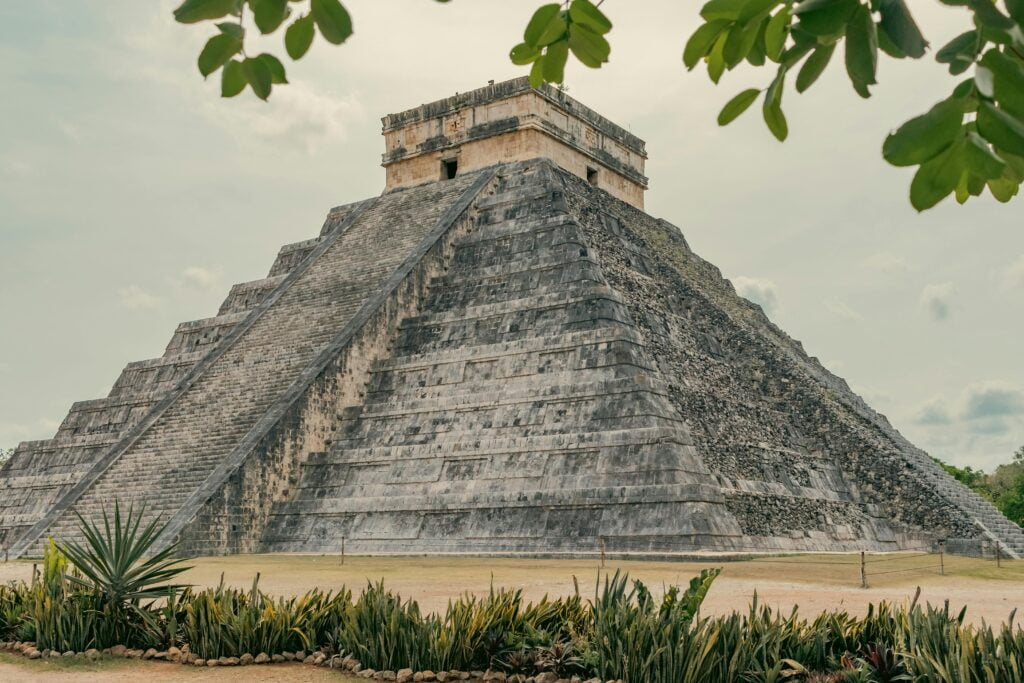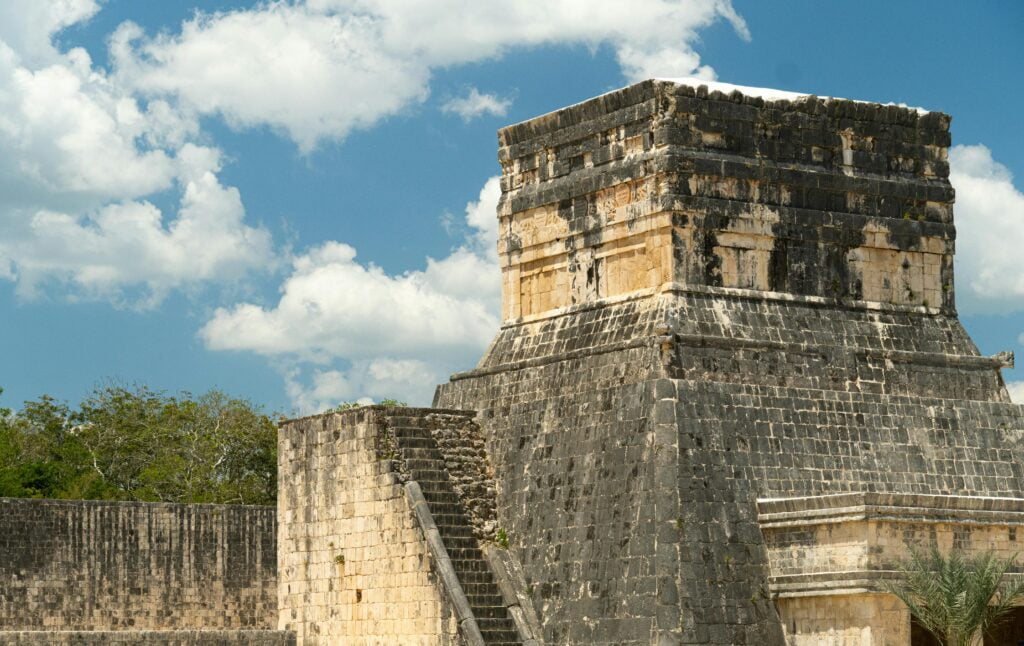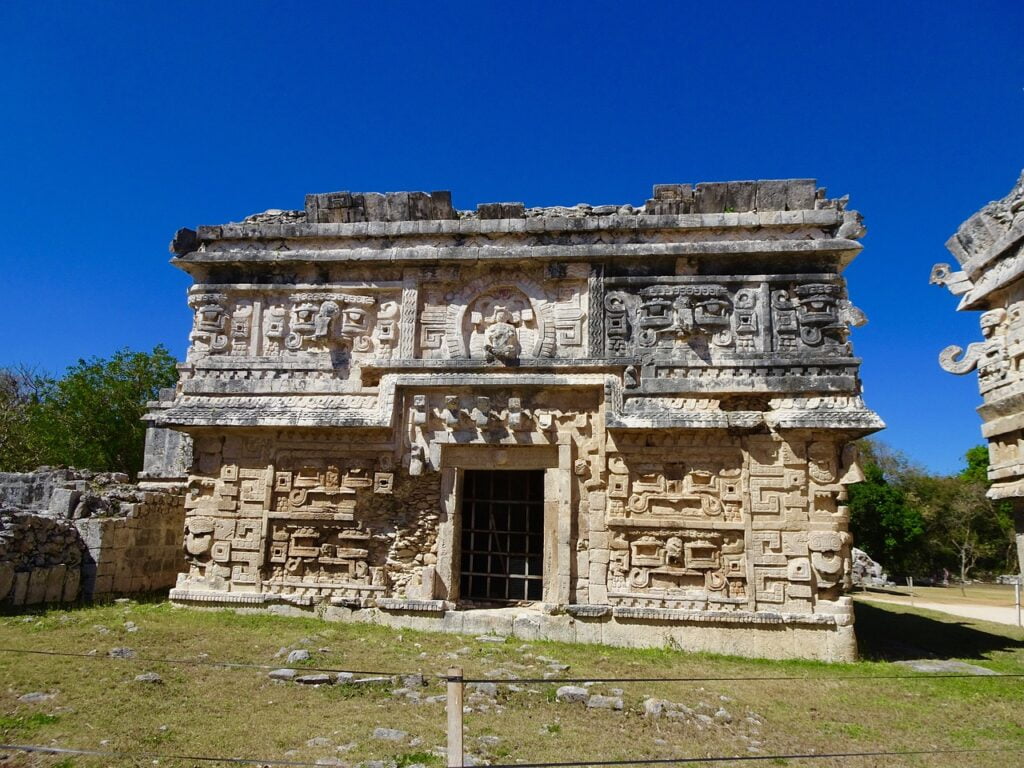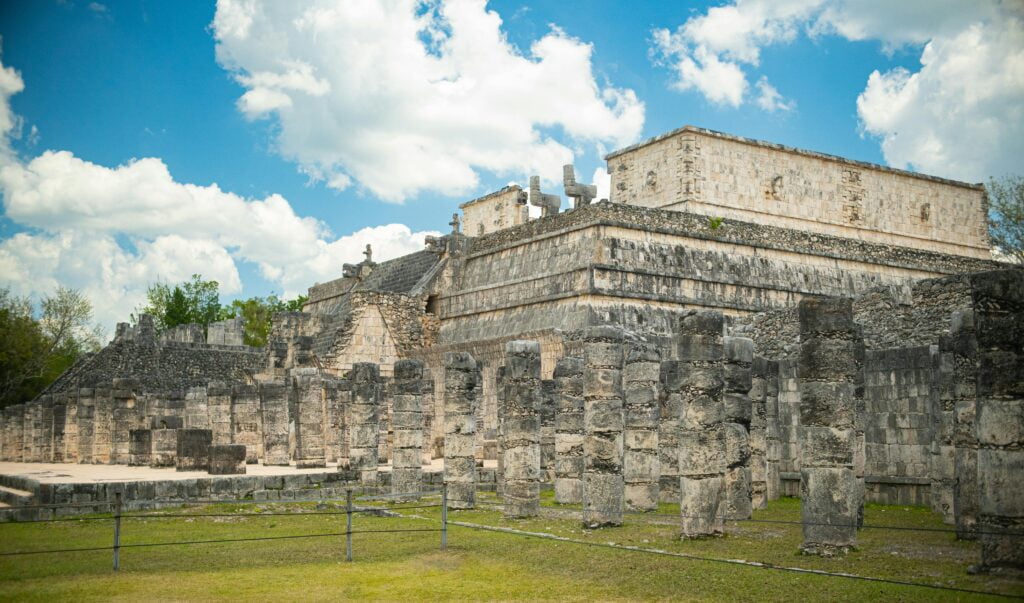Introduction
Chichen-Itza, a crucial Mayan hub in the Yucatán peninsula, is a revered site that has endured over time. Various groups have influenced the city over its almost 1,000-year existence. The city’s stone monuments and artistic creations showcase the Maya and Toltec worldviews, reflecting a rich and varied cultural legacy.
The combination of Mayan building methods with fresh elements from central Mexico establishes Chichen-Itza as a significant illustration of the Mayan-Toltec culture in Yucatán. Numerous structures have endured, including the Warriors’ Temple, El Castillo, and the El Caracol round observatory.
Table of Contents
Where is the Chichen Itza located?
Chichen Itza is in the eastern part of the Yucatán state in Mexico. It is located on the northern Yucatán Peninsula, approximately 75 miles to the east of the present-day city of Mérida. The site’s precise coordinates are 20.6843° N latitude and 88.5678° W longitude. Chichen Itza is located near the most significant cities in the Yucatan Peninsula and well-liked tourist spots such as Tulum, Playa del Carmen, Valladolid, Mérida, and Izamal.
Inscription of the Chichen Itza
Chichen Itza, a prominent archaeological site of the ancient Maya civilization, was inscribed as a UNESCO World Heritage Site in 1988, a milestone highlighting its cultural and historical significance and the need for its preservation. Its global importance was further cemented in 2007 when it was named one of the New Seven Wonders of the World, a recognition that continues to underscore its worldwide significance.
What is the Chichen Itza?
Chichen-Itza originated in the Classic period near two natural underground cavities, known as cenotes or chenes, which named the city “At the edge of the well of the Itzaes.” These cenotes made it easier to access the area’s underground water sources. Different local records provide various dates for establishing this settlement: one document suggests 415-35 A.D., while others indicate 455 A.D.
The second founding of Chichen-Itza, which holds great significance for historians, occurred when Toltec warriors migrated from the Mexican plateau to the south during the 10th century. The most famous story claims that the city was taken by the King of Tula, Ce Acatl Topiltzin Quetzalcoatl, also known as Kukulkan according to the Maya, between 967 A.D. and 987 A.D.
No significant structures appear to have been built at Chichen-Itza after the 13th century, and the city experienced a swift decline around 1440 A.D. The ruins remained unexcavated until 1841 A.D.
What is the meaning of El Castillo?

Following the capture of Yucatán, a fresh style emerged, mixing Maya and Toltec customs, representing the acculturation process. Chichen-Itza is a perfect demonstration of this combination. Some specific instances include the Caracol in the southern building group, a round observatory with a spiral staircase, and El Castillo (also called the Temple of Kukulkan) in the north.
The terraces surrounding El Castillo contain the main monumental complexes. To the northwest, you will find the Great Ball Court, Tzompantli (the Skull Wall), the Jaguar Temple, and the House of Eagles. The Group of the Thousand Columns and the Market are visible to the northeast. Finally, to the southwest is the Tomb of the High Priest.
Architecture

The monuments found in Chichen-Itza, especially in the northern complex, such as the Great Ball Court, the Temple of Kukulkan, and the Warriors, are considered to be exceptional examples of Mesoamerican architecture due to their well-proportioned beauty, intricately constructed design, and magnificently sculpted adornments.
Civilization

The structures of Chichen-Itza significantly impacted the entire cultural region of Yucatan from the 10th to the 15th century. Chichen-Itza is the most significant archaeological remains of the Maya-Toltec civilization in Yucatan from the 10th to the 15th centuries.
Protection and Management

Chichen-Itza is preserved by the 1972 Federal Law on Monuments and Archaeological, Artistic, and Historic Zones. In 1986, a presidential decree designated it an archaeological monument. The site is accessible to the public every day of the year and welcomes at least 3,500 visitors per day, with numbers reaching up to 8,000 during the peak season.
Chichen Itza is recognized as a UNESCO Heritage Site and one of Mexico’s most crucial archaeological sites. Preserving its cultural, historical, and architectural importance requires implementing diverse strategies and actions. Safeguarding the management and preservation of Chichen-Itza is essential in protecting this remarkable archaeological site for the benefit of future generations.
Why should you visit, and what advantage do you get as a visitor from Chichen Itza, Mexico?

Chichen Itza is situated in the eastern region of the Yucatán state in Mexico and holds great historical and cultural importance, making it a destination that travelers should not miss. When you visit Chichen Itza, you can explore a respected archaeological site that has stood for nearly 1,000 years, showcasing the diverse cultural heritage of the Maya and Toltec civilizations. Exploring Chichen Itza allows you to discover ancient stone structures, artistic achievements, and outstanding instances of Mesoamerican architecture. A visit to this UNESCO Heritage Site and one of the New Seven Wonders of the World offers a more profound insight into the Mayan-Toltec culture in the Yucatán.
At Chichen Itza, impressive buildings like the Warriors’ Temple, El Castillo, the circular observatory El Caracol, the Great Ball Court, the Temple of the Warriors, and more add to the site’s historical and cultural richness. In addition, Chichen Itza’s proximity to popular tourist destinations like Tulum, Playa del Carmen, Valladolid, Mérida, and Izamal provides easy access to other important cities and attractions in the Yucatan Peninsula.
When you visit Chichen Itza, you have the opportunity to delve into the intriguing history of the Maya-Toltec civilization, be in awe of the remarkable architectural marvels, and develop a greater understanding of the cultural significance of this beautiful site.




